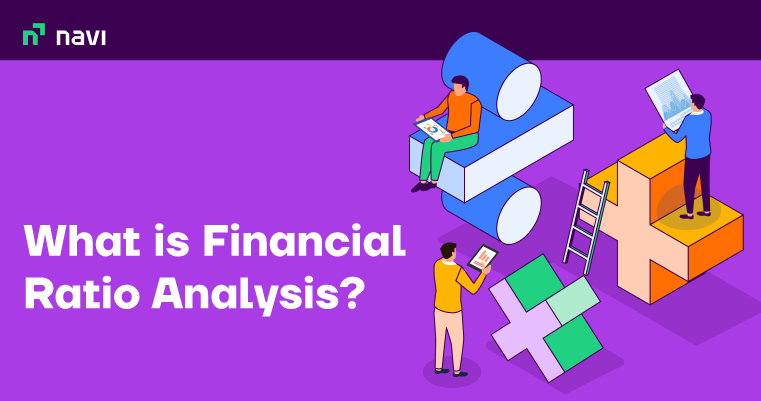Best Government Business Loans In India: Eligibility and How To Apply?

MSMEs (Micro, Small, Medium Enterprises) are considered instrumental in eradicating unemployment, income inequality, poverty, etc. Moreover, these sectors hold a pivotal role in providing employment to chunks of the population and contribute around 27% of GDP. Keeping the unparalleled importance of MSMEs, the Government of India has come up with Government Business Loans to help entrepreneurs secure working capital and expand their enterprises.
There are 5 government business loan schemes you can choose from. This article provides a detailed overview of these Government small business loans along with eligibility criteria, documents required and how to apply. Read on!
Top 5 Government Business Loan Schemes
Here’s a list of Government business loan schemes:
1. Pradhan Mantri MUDRA Yojana (PMMY)
MUDRA stands for Micro Units Development and Refinance Agency Ltd. and is also known as start-up business loans. It provides refinancing support to NBFCs and Banks for lending to small businesses that require loans up to Rs.10 lakh. MUDRA loan is a collateral-free credit option that borrowers can avail of at an affordable interest rate. Moreover, borrowers can choose to extend the repayment tenure. A processing fee or prepayment charges are not applicable for closing the loan account. Enterprise/business owners associated with trading, service activities, women entrepreneurs, etc. are eligible for MUDRA loans.
Under the MUDRA loan, individuals are offered three other loan schemes:
- Shishu MUDRA loan: It extends a loan amount to up to Rs.50,000 at an interest rate of 1%-2% p.a.
- Kishor MUDRA loan: It comes with a loan limit of Rs.5 lakhs at an interest rate of 8.60%-11.15% p.a.
- Tarun MUDRA loan: The maximum loan amount for the Tarun MUDRA loan is over Rs.5 lakh up to Rs.10 lakhs at an interest rate of 11.15%-20% p.a.
2. MSME Loan in 59 Minutes
MSME (Micro, Small, Medium Enterprises) loan or PSB loan in 59 minutes is a Government-launched digital platform ensuring faster disbursal of loan amounts for those who want to spread out their current enterprises. Borrowers can access a lump sum loan amount from Rs.1 lakh to up to Rs.5 crore within 59 minutes at an interest rate of 8.50% p.a. from NBFCs and banks. The borrowers do not have to pledge any collateral as this portal is linked with the CGTMSE scheme (Credit Guarantee Fund Trust for Micro and Small Enterprises).
3. Credit Linked Capital Subsidy Scheme (CLCSS)
Technological advancement is responsible for the growth of a business entity. However, maximum small enterprises cannot afford the high cost associated with integrating technological up-gradation. Credit Linked Capital Subsidy Scheme (CLCSS) was launched to provide financial aid for technological modification of business, working capital, etc. Individuals can use the fund to revamp business essentials like manufacturing, supply chain, marketing, etc.
Borrowers can derive a loan principal of Rs.1 crore. Moreover, they can get financial aid in the form of a 15% subsidy on a maximum loan quantum of Rs.15 lakhs. In addition, MSMEs of individuals from the SC/ST category will receive an additional subsidy of 10% after the disbursement of the mentioned 15% subsidy.
4. National Small Industries Corporation (NSIC)
Under the NSIC (National Small Industries Corporation) scheme, individuals get financial assistance in marketing, technology, finance, raw materials, and other requirements needed by the firm. This ISO certified Indian Government MSME enterprise helps businesses prosper in this competitive business landscape.
Small scale industries will reap the benefit of cost-free tenders under the marketing assistance program. Moreover, small scale industries are not liable to pay any security deposits and are provided further financial support for land and building departments if their project expense is not above Rs.25 lakh.
NSIC provides the following schemes:
- Credit Support Scheme: NSIC provides financial support for marketing and raw material procurement and finances MSMEs through banks.
- Marketing Support Scheme: NSIC provides marketing support to enterprises through Tender Marketing and Consortia schemes. Through these schemes, NSIC carried out Exhibitions and Technology Fairs and set up marketing intelligence for promoting and marketing businesses.
5. Stand Up India
Stand up India is a Government business loan scheme for women entrepreneurs and people from minority categories like SC and ST. This scheme is backed by SIDBI (Small Industries Development Bank of India) and grants loan amounts ranging from Rs.10 lakh to Rs.1 crore.
Stand Up India provides financial support to enterprises associated with manufacturing, trading, agriculture, services, etc. Moreover, if the fund is obtained for a non-individual enterprise, eligible applicants that are SC/ST individuals or women entrepreneurs must hold 51% of the shareholding stake. Points to keep in mind are that this loan is not a collateral-free loan. Stand Up India Loan is secured by pledging collateral or through the guarantee of the Credit Guarantee Fund Scheme for Stand-Up India Loans (CGFSIL).
How to Apply for A Government Business Loan?
With the increasing digitisation in the financial sector, it has become very easy for borrowers to avail of business loans online from the comfort of their homes. Here are the steps that will guide applicants to avail of government business loans:
- Step 1: Visit the official website of preferred banks or NBFCs extending government-backed credit options.
- Step 2: Now log in to the portal and authenticate the login with the OTP.
- Step 3: Read the terms and conditions of Government loan schemes.
- Step 4: Proceed by filling out the online application form with personal and business details.
- Step 5: Finally, attach documents and submit them.
After submission, lenders scrutinise and verify the application process and disburse the loan amount directly to the mandated account.
Borrowers can also apply for government business loans offline by directly visiting the bank and submitting the necessary documents.
Eligibility Criteria for Government Business Loans
It is imperative for borrowers to adhere to the eligibility criteria before applying for government business loans. Here’s a list of eligibility criteria for Government business loans:
- Applicants must be Indian.
- Individuals must fall in the age bracket of 25 years to 66 years.
- MSMEs associated with services, trading, retailing, manufacturing, and sole proprietorships like CAs, doctors, etc., are eligible for reaping the benefits of the government business loans.
- Both new and existing businesses can apply for government business loans. However, an existing business must have at least a 1-year business existence.
- The loan amount must meet the minimum and maximum loan limit as set by that particular Government business loan scheme.
- Annual turnover of the business, Income Tax Returns (ITR) and P & L statements are required.
- Existing loans and debts or past defaults are also taken into consideration.
Documents Required for Government Business Loans
Besides adhering to the eligibility criteria, borrowers need to keep the following documents in order, helping them receive quick loan approval and disbursement of the loan principal.
These include-
- KYC (Know Your Customer) documents
- Address proof (Voter ID card, driving license, PAN card, etc.)
- Business establishment certificate
- Bank account statements for the previous 6 months
- Financials (VAT returns, profit and loss report, tax audit report etc.)
- Duly filled Government business loan application form
Also Read
Final Word
The Indian Government has launched several loan schemes to promote MSMEs and revive the country’s economy. A government business loan is a helpful credit option that allows entrepreneurs to start their professional journey. To get the business loan easily and avoid last-minute hassles, borrowers must have well-rounded information on the type of enterprises the Government business loans support, their eligibility criteria and the documents required.
FAQs
Ans: You can conveniently reach out to any of the mentioned financial institutions to avail a mudra loan:
– Indian bank
– Kotak Mahindra Bank
– ICICI Bank
– Oriental Bank of Commerce
– HDFC Bank
– Allahabad Bank etc.
Ans: Government loan schemes for new businesses and existing ones come with various convenient payment methods. For example, you can repay the business loan principal by post-dated cheques, direct debit, and electronic clearing services (ECS).
Ans: No. You can avail a business loan without pledging your asset as collateral. This is because lenders disburse the loan amount depending on the borrower’s credit score instead of scrutinising your asset. However, some credit support like Stand Up India may require you to pledge collateral.
Ans: If you are denied a start-up loan from a bank, you can easily avail yourself of it from SFBs (Small Finance Banks), NBFCs (Non-banking Financial Companies) and MFICs (Micro Finance Institutions). Moreover, those who are going to set up their start-ups can seek the assistance of the Mudra loan, Stand up India scheme, etc.
Ans: The monthly instalments that you need to pay towards the repayment of the loan principal depend on the loan amount, interest rate, loan tenure, etc. You can use a business loan EMI calculator to get clarity on the EMI amount.
Disclaimer
This article is solely for educational purposes. Navi doesn't take any responsibility for the information or claims made in the blog.

Customer’s Feedback
No comments found.What is Primary Deficit? – Example, Formula & Measures
What is a Primary Deficit? Primary Deficit is the difference between the current year’s fiscal... Read More »What is Financial Ratio Analysis? – Objectives, Types and Uses
Ratio analysis is a process that allows people to assess the financial health of a company. Using t... Read More »Treasury Management – Its Functions, Types and Benefits
Even the most well-funded business can run into huge losses if it does not have the resources to fu... Read More »How Anti Money Laundering Combats Financial Crime?
Anti Money Laundering (AML) is a system of rules, laws, regulations, and procedures that financial ... Read More »What is Salvage Value and Why is it Useful?
Salvage value, also called scrap value, is the value of a specific asset after its useful life. In ... Read More »Key Difference Between Factoring and Forfaiting in Trade Finance
Factoring and forfaiting have grown in prominence as major sources of export financing. For the uni... Read More »What is Factoring and its Importance in Financial Management?
Factoring is a practice in which a company buys the accounts receivable of another company at a dis... Read More »What is Budget Surplus: Its Effects, Advantages and Impact with Examples
When the revenue of a government, business, or individual exceeds its expenses in a given period, i... Read More »What is Balanced Budget – Components, Importance and Examples
In financial planning or the budgeting process, a balanced budget is one in which total anticipated... Read More »What Does Inflationary Gap Mean in Macroeconomics?
In macroeconomics, the difference between current and potential GDP is known as a gap. This gap is ... Read More »What is Accounting Conservatism in Finance and How Does it Work?
Accounting conservatism involves a conservative set of accounting guidelines wherein the worst-case... Read More »Multiple Linear Regression (MLP) – Uses, Formula and Examples
Various statistical models help in establishing a relationship between different variables. Multipl... Read More »Top 10 Chit Fund Schemes in India in 2023
Chit funds are one of the most popular return-generating saving schemes in India. It is a financial... Read More »10 Best Gold ETFs in India to Invest in April 2023
Gold ETFs or Gold Exchange Traded Funds are passively managed funds that track the price of physica... Read More »10 Best Demat Accounts in India for Beginners in 2023
Creation of Demat accounts revolutionised the way trades were conducted at the stock exchanges. It... Read More »20 Best Index Funds to Invest in India in April 2023
What is an Index Fund? An index fund is a type of mutual fund or exchange-traded fund (ETF) that... Read More »Best Arbitrage Mutual Funds to Invest in India in April 2023
Arbitrage funds are hybrid mutual fund schemes that aim to make low-risk profits by buying and sell... Read More »10 Best SIP Plans in India to Invest in April 2023
What is SIP? SIP or Systematic Investment Plan is a method of investing a fixed amount in ... Read More »10 Best Corporate Bond Funds in India to Invest in April 2023
Corporate bond funds are debt funds that invest at least 80% of the investment corpus in companies ... Read More »10 Best Bank for Savings Account in India [Highest Interest Rate 2023]
Savings account is a type of financial instrument offered by several banks. It lets you safely depo... Read More »
































